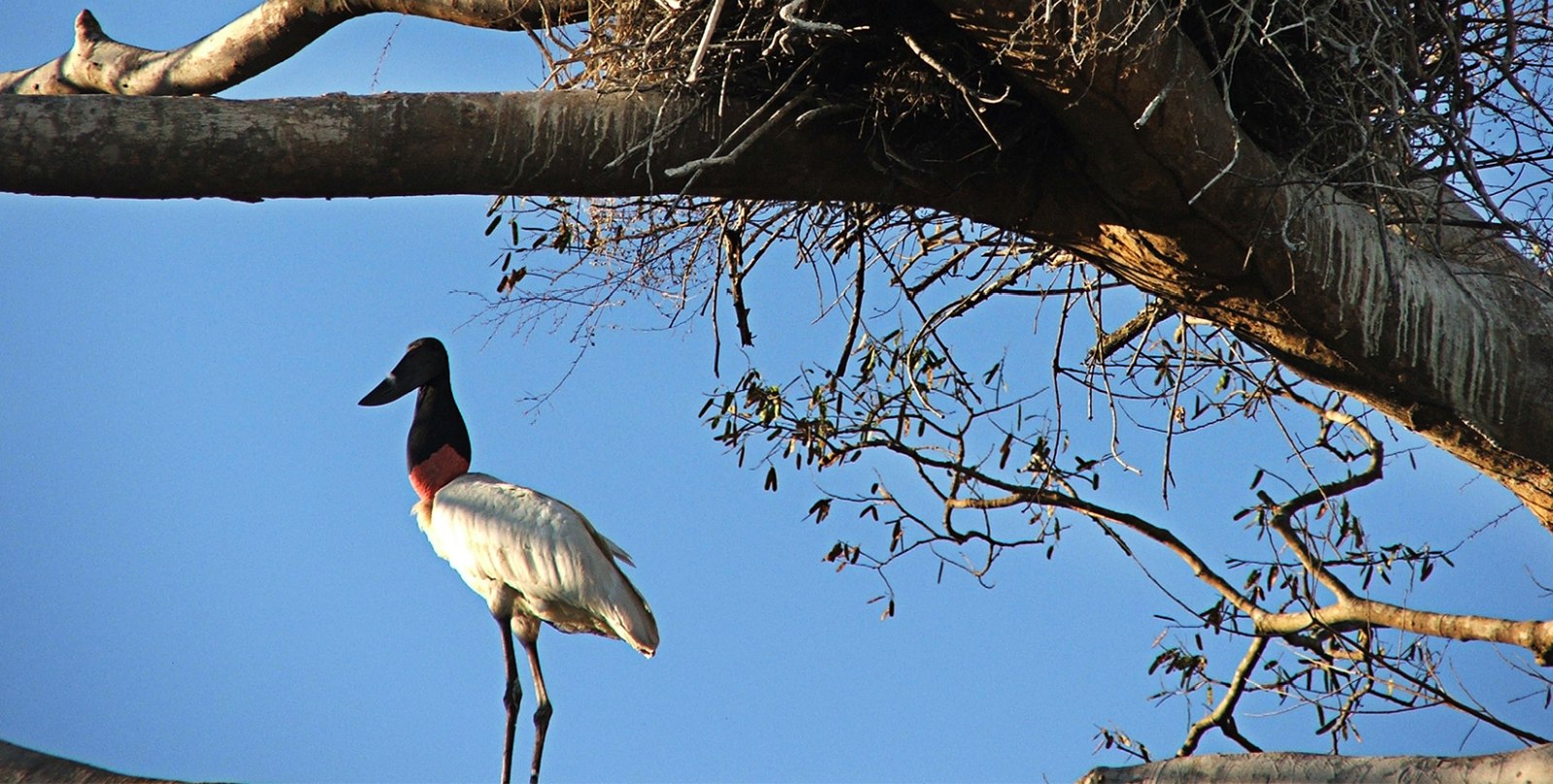
The jabiru stork is known by many in Costa Rica simply as “el galán sin ventura” (the hapless suitor). It is a beautiful aquatic bird native to the American tropics that could soon become extinct.
In Costa Rica, this bird has only two habitats, one in the basin of the Tempisque River in the Nicoya Peninsula, and the other in Rio Frio in the area of Los Chiles, Upala and Guatuso.
According to Johnny Villarreal, a biologist who researches this species, studies show these storks are in danger of extinction.
“One of the key elements to determine that a species is endangered is the size of the population, and we have been able to determine that the population of this species in our country does not exceed 90 individuals. On the other hand, there is a small number of offspring per year. Of the 40 nests reviewed during the reproductive period this year (2015), only six had hatchlings, which is a very low number,” said Villarreal.
The destruction of mangroves, swamps and trees where they nest, like the ceibo and gallinazo trees, is most detrimental to the species, as well as humans intruding in their natural habitat due to various economic activities.
According to Villarreal, a commission was established in 2003 to provide protection to the bird. The commission is composed of the National System of Conservation Areas (SINAC- Sistema Nacional de Areas de Conservacion), the Tempisque Conservation Area (ACT- Area de Conservacion Tempisque), the Arenal Conservation Area, Asotempisque, the State Distance University (UNED- Universidad Estatal A Distancia) and the Central Azucarera el Viejo sugar industry.
The work performed by the commission includes training property owners in areas where the species develops so they know what to do to protect them, because 75% of jabiru storks breed in private lands.
|
Scientific Name: Jabiru Mycteria is one of the largest species of storks in the world and the largest flying bird in America. Size: 1.5 meters tall Characteristics: Its plumage is white, the head and neck are featherless, with a red ring at the base of its neck, long legs and long black beak made especially for fishing. It is a mute bird that does not make any sound or song and communicates by tapping the peak. Couples stay together for life until separated by death. Habitat: They breed in gallinazo and ceibo trees and their nests can reach 2 meters in diameter. |







Comments